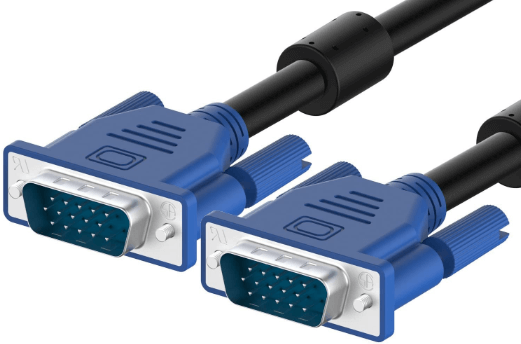There are different connectors in the market, such as VGA, DVI, HDMI. And if you want to know about the VGA connector, then you are in the right place. In this post, MiniTool will tell you the VGA connector’s design, cable quality, and availability.
You can find that there are some devices contain VGA connectors, and most devices include DVI and HDMI connectors. This post is mainly talking about the VGA connector, and if you want to know about DVI connectors, go to the MiniTool website.
Overview of VGA Connector
What is VGA connector? The Video Graphics Array (VGA) connector is a three-row 15-pin DE-15 connector. Many video cards, computer monitors, laptop computers, projectors, and high-definition televisions provided 15-pin VGA connectors. On laptop computers or other small devices, sometimes a mini-VGA port was used instead of a full-size VGA connector.
Design
VGA connectors and cables carry analog component RGBHV (red, green, blue, horizontal sync, vertical sync) video signals and VESA Display Data Channel (VESA DDC) data.
The original IBM PS/2 defined different signal assignments. The IBM 8513 monitor defined pin 5 as “Self Test”. When the cable is disconnected (the pin is not connected to the ground), the screen shows a white screen.
The IBM PS/55 Display Adapter defined pin 9 as “+ 12V”. When the system unit is turned on, it turns on a specific monitor. In PS/2, the pin 9 was locked by inserting a female connector hole; this prevented a non-VGA 15-pin cable from being inserted into the VGA socket.
The four pins possessed Monitor ID bits, which were rarely used; VESA DDC redefines some of these pins and replaced the key pins with a +5 V DC power supply. Devices that meet the standards of the DDC host system can provide a voltage of 5 V ± 5% and provide a current of at least 50 mA to a maximum of 1 A.
The design of the VGA interface is not hot-swappable (that is, users cannot connect or disconnect output devices while the host is running), although it can be done in practice, and usually does not cause hardware damage or other problems.
However, there is nothing in the design to ensure that the ground pin forms the first contact or the last contact in the connection, so hot swapping may introduce a surge in the signal line, which may or may not be fully protected It is protected from damage. In addition, depending on the hardware and software, monitor detection is sometimes unreliable when hot-plugging a VGA connection.
Cable Quality
The same VGA cable can be used for various supported VGA resolutions, ranging from 320 × 400px @70 Hz, or 320 × 480px @60 Hz (signal bandwidth is 12.6 MHz) to 1280 × 1024px (SXGA) @85 Hz (160 MHz) and up to 2048 × 1536px (QXGA) @85 Hz (388 MHz).

There is no standard that defines the quality required for each resolution, but high-quality cables usually conclude coaxial wiring and insulation, making them thicker. Shorter VGA cables are unlikely to cause significant signal attenuation.
High-quality cables should not be affected by signal crosstalk so that signals in one wire can induce an unwanted current in adjacent wires or ghosting. Ghosting occurs when the impedance does not match, and the ohm (Ω) in the 75 specification causes the signal to be reflected. However, ghosting with long cables may be caused by incorrectly terminated devices or passive cable splitters rather than the cables themselves.
Some high-end monitors and video cards have five independent BNC connectors for RGBHV signals, and five 75-ohm coaxial cables can be used to achieve the highest quality connection. In the 15-pin connector, the red, green, and blue signals (pins 1, 2, and 3) cannot be shielded from each other, so crosstalk may occur in the 15-pin interconnect.
The BNC maintains complete coaxial shielding with circular connectors to prevent crosstalk, but the connectors are very large and bulky. The requirement to press and turn the plug shell to disconnect the connection requires access space around each connector to allow the grasping of each BNC plug shell. BNC usually does not support supplementary signals, such as DDC.
Availability
Newer video cards usually do not have VGA output. The DVI-I output, still containing analog VGA compatible signals, is usually omitted. Thus, if the user wants to connect a monitor or projector with only a VGA input, the user will usually need to use an active converter to receive digital signals from a DVI-D or HDMI or DisplayPort connector and convert them to VGA analog signals. Only older series video cards and motherboards (used with integrated GPUs) may still have VGA or DVI-I connectors.
Related post: [2020 Guide] How to Choose a Motherboard for Your PC
Bottom Line
To sum up, this post introduces what the Video Graphics Array connector is. You can the VGA connector’s design, cable quality, and availability in this post.